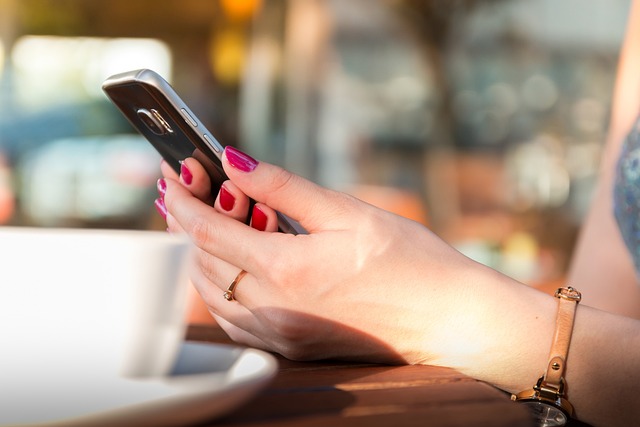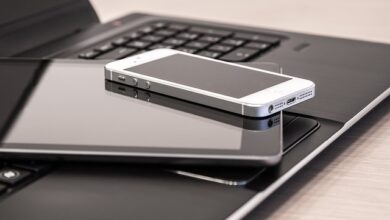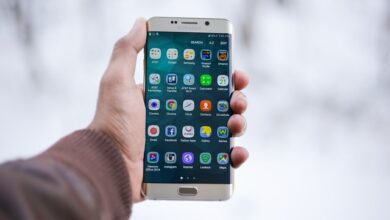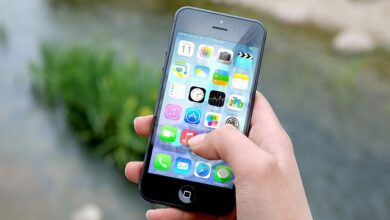
In today’s digital age, smartphones have become indispensable tools, essential for communication, work, and entertainment. However, one of the most common complaints from smartphone users is battery life. As smartphones become more powerful, their battery consumption tends to increase, leaving users constantly searching for chargers. The good news is that there are practical tips and habits you can adopt to extend your smartphone’s battery life. In this article, we will explore effective strategies to ensure your phone stays powered for longer periods, helping you reduce the need for constant recharging.
1. Optimize Screen Brightness and Display Settings
One of the primary factors affecting your smartphone’s battery life is the screen. The larger and brighter the display, the more energy it consumes. Adjusting your screen settings is one of the easiest ways to conserve power. Here are some effective methods:
- Reduce Screen Brightness: Most smartphones have automatic brightness adjustment, but you can manually lower the brightness to a level comfortable for your eyes. This simple change can significantly prolong battery life.
- Use Dark Mode: If your smartphone supports dark mode, switching to it can reduce the power needed to light up your display, particularly on OLED and AMOLED screens.
- Shorten Screen Timeout: Set your phone’s screen to turn off quickly when not in use. A timeout period of 15-30 seconds is usually sufficient and can prevent unnecessary battery drain.
- Avoid Live Wallpapers: While animated wallpapers look appealing, they consume more power than static ones. Choose a simple, dark-colored wallpaper to conserve energy.
2. Limit Background App Activity
Many apps continue to run in the background even when you are not actively using them, leading to unnecessary battery drain. You can limit background activities with these tips:
- Close Unused Apps: Always make it a habit to close apps that you’re not using. This ensures that they’re not consuming power unnecessarily.
- Disable Background App Refresh: On both iOS and Android, apps refresh in the background to update content. You can disable this feature for apps that don’t require constant updating, like social media or news apps.
- Restrict Location Services: Many apps request access to your location, even when they’re not in use. To save battery, only allow location access when the app is active, or turn off location services entirely for apps that don’t need it.
3. Enable Power-Saving Mode
Most modern smartphones come with built-in power-saving modes designed to limit non-essential functions when the battery is low. Enabling power-saving mode can significantly extend battery life by adjusting various settings. Here’s how it works:
- Android Power-Saving Mode: On Android devices, the power-saving mode reduces background processes, limits screen brightness, and restricts the use of certain high-power apps.
- iOS Low Power Mode: On iPhones, the Low Power Mode disables automatic updates, reduces visual effects, and optimizes background functions to conserve power.
Activating power-saving modes when your battery level drops to 20% or lower can help you squeeze out those last few hours of usage.
4. Turn Off Unnecessary Features
Smartphones come with a host of features that, while convenient, are not always necessary for everyday use and can drain your battery. Turning off these features when not in use can lead to a substantial increase in battery life.
- Disable Wi-Fi, Bluetooth, and NFC: When you are not using Wi-Fi, Bluetooth, or NFC (Near Field Communication), turn them off. Keeping these features on constantly searches for connections, consuming unnecessary power.
- Turn Off Vibration and Haptics: While vibration alerts can be useful in certain situations, they consume more power than simple sound notifications. If you don’t need vibrations or haptic feedback, turn them off to save battery.
- Disable Push Notifications for Non-Essential Apps: Some apps, like email or social media platforms, constantly push notifications, draining your battery. Customize your notification settings to receive alerts only for essential apps and disable the rest.
5. Manage Network Connections Wisely
Your smartphone’s ability to connect to the internet is crucial, but it can also be one of the most significant battery drainers, especially in areas with poor network coverage.
- Use Airplane Mode in Low Signal Areas: When you’re in an area with weak cellular signal, your phone works harder to maintain a connection, which quickly drains your battery. If you don’t need to make calls or use data, switch to Airplane Mode to prevent your phone from wasting power on searching for signals.
- Prefer Wi-Fi Over Cellular Data: Wi-Fi consumes less battery than cellular data. When possible, connect to a Wi-Fi network rather than using 4G/5G. However, remember to turn off Wi-Fi when it’s not needed, as your phone will continuously search for networks.
- Turn Off 5G When Not Needed: While 5G networks offer faster speeds, they also drain your battery more quickly. If 5G isn’t necessary for your current tasks, switch to 4G or LTE to conserve power.
6. Proper Charging Habits
The way you charge your phone can also affect your battery life in the long run. Lithium-ion batteries, commonly used in smartphones, degrade over time, but adopting good charging habits can slow this process and improve battery longevity.
- Avoid Full Discharges: It’s best not to let your phone battery drop to 0%. Frequent full discharges can reduce the overall lifespan of the battery. Try to keep your battery level between 20% and 80%.
- Don’t Overcharge: Leaving your phone plugged in after it’s fully charged can cause overheating and degrade the battery over time. If possible, unplug your phone when it reaches 100%, or consider using a charger with an automatic cutoff.
- Use Original or Certified Chargers: Always use the charger that came with your phone or a certified alternative. Using cheap or uncertified chargers can not only damage your battery but also reduce its efficiency.
7. Regular Software Updates
Keeping your smartphone’s software up to date is essential for maintaining optimal battery performance. Manufacturers often release updates that include improvements to battery management and overall system efficiency.
- Update Your Operating System: Both iOS and Android release updates designed to optimize battery usage. Ensure your phone is running the latest version of its operating system.
- Update Apps Regularly: Developers often release updates to fix bugs and improve the efficiency of their apps. Keeping your apps up to date can help reduce background power consumption.
8. Monitor and Manage Battery Usage
Most smartphones have built-in tools that allow you to monitor battery usage. By regularly checking these tools, you can identify which apps or functions are consuming the most power and adjust your usage accordingly.
- Battery Usage Insights: In your phone’s settings, you can find detailed information about which apps are using the most battery. This feature helps you understand where your battery power is going and lets you make informed decisions about which apps to limit or uninstall.
- Third-Party Battery Monitoring Apps: Several apps on the market are designed to monitor battery health and usage patterns. These apps can provide insights into your charging habits and offer suggestions for improving battery life.
9. Use Battery Cases and External Power Banks
For users who are frequently on the go and can’t always find a charger, investing in a battery case or external power bank is a practical solution. These devices provide extra power and can be especially useful when traveling or during long workdays.
- Battery Cases: These protective cases have built-in batteries, which can extend your phone’s battery life by several hours.
- Power Banks: Portable power banks come in a variety of sizes and capacities. They allow you to recharge your phone multiple times before needing to be recharged themselves.



